| Revista Umělec 2006/2 >> The Present without Forgetting | Lista de todas las ediciones | ||||||||||||
|
|||||||||||||
The Present without ForgettingRevista Umělec 2006/201.02.2006 Burkhard Meltzer | u-sobě | en cs |
|||||||||||||
|
The interpretation of the concept of the present seems to be undergoing a fundamental change among artists and those who facilitate art - not only in Switzerland. On the one hand one tries to establish processes of perception in the space of art as a long lasting process; on the other hand, contemporary art is often integrated in historical contexts. Art has always been an excellent and adequate fundamental counter-concept to the habitual rhythm of everyday life.
Until today the lives of many people in the areas of work and leisure is structured by wage labor as one of its determinant factors. The German philosopher Martin Heidegger noted in 1924, “That being that is calculating with time always says: I never have time.” He refers to the idea that one exists, but there are individually organized times. One always has to consider the horizon of human existence—death, which naturally turns out to be very individual. From this point of view no universal notion of time can exist. Is it possible today to conceive the present as a permanent process rather than as punctual active reality? “The present,” “moment,” and “active” are no measurable units of time. They can in fact be used as attributes of a certain chronological narration, which can spin a net of relations from the moment to the past and the future. What first comes into one’s mind are the relations to history that open the horizon of a longer period. There is in fact a younger generation of artists in Switzerland that is interested in the relations between the different timings. In the video works of Cora Piantoni (*1975, based in Zurich) the observer can move synchronically in the past and in the present. The artist films her parents who are dressed in the carnival costumes, in which they met each other decades ago. Equipped in these costumes they move in their every day environment: in the office, during gardening, in the kitchen. Although they have lived separately for a long time, they talk about how they first met several decades ago. While the story starts with a funny carnival joke, it develops a story between times. Image and language often are assigned to “history,” “present” or “future.” Pascal Häusermann (*1973, based in Zurich) works as well with historical materials: stone, scripture, engraving. This sounds like a martial relatedness to history. But the engraved texts from magazine-headlines and advertising slogans (“We are designed to be different”) are creating a specific liaison with stone material. Something in the present, originally designed for a fashionable trend, is going to be preserved for eternity and at the same time seems to be part of history. The Geneva artist Marc Bauer (*1975, lives in Brussels and Amsterdam) was executing a small drawing like in a temporary space in the Solothurn Museum of Art in February 2005. In a hastily constructed room made from chipboard, one encounters the portrait of a young man whose eyes seems to risk a tremulous look over his own shoulders. His mouth - half opened – allows a glance into a deep black throat. This pencil drawing looks quickly sketched. Line and shading seems to interrupt again and again. However, some other parts are intensively emphasized, as if a fast impulse had made the drawing at the very last moment. It looks like we are witnesses of a horrible event that is either going to happen very soon, or is part of a disturbing memory. The works reveal the existence of something like a very strong historical consciousness for the present that at the same time always refers to the possibilities and impossibilities of the future. The artists treat both language and materials as memory. It is obvious how naturally historic developments seem to be connected with these works. They use relations between times not as a statement or ironic commentary, but understand this connection as constitutive concerning their position in the present. Instead of just being used as a reservoir of visual impulses, references between things in the present and in the past can serve as a moment of identification of contemporary art. It might be one of the most difficult projects to develop concrete visions of future today, which originate from a story of the present. It is not only difficult because the applying the important “time projection machine” is not easy today. This 20th century instrument accompanied the canonical flow of Modernism and Postmodernism that both claimed an absolute horizon of time. To think within an ideology always means to face the future with certainty. The terms future and ideology are close connected with each other because of their characteristic method of using an idealized present as a “calculation basis” for the future. Now it seems that today’s hope for a newer and more humane society as well as the Post-modern theory of the end of history did not turn out to be fulfilled. The artwork of Mai-Thu Perret (*1976, based in Berlin) deals with exactly these kinds of questions. The group The Crystal Frontier tells about a fictitious community of autonomous living women who retired in the desert of New Mexico. Perret also uses explicit symbols from the history of ideology, such as a hammer and sickle from communism together with the very explicit working title Heroine of the People – supposed to be produced by that group of women. The Geneva artist connects historical visions of future of a perfect community with images of an ideological world-view. This functioning plays with a counter draft towards the established concept of living of a middle-European society in shape of an insular community. It appears as a narration between the times present, past and future. At the same time it picks up prospering commercial offers of withdrawal such as crafts, wellness offerings or “Gated Communities,” which promise a temporary exit from society. One can even say in many instances that an art anti-vision towards social development has sprung up again in art. One currently often posed question, how the moment of the present spins its relations to past and future, is apparently an expression of a comprehensive new positioning between times. Currently it seems that many of those discussions in art are aligned to the future. Whether this is an expression of an orientation back in a conservative sense, is to be questioned. Maybe a broad “revision” of the visual languages of the last century is more than necessary in order to establish a reference to the present that is not only based on a moment of absent-mindedness.
01.02.2006
Artículos recomendados
|
|||||||||||||
|
04.02.2020 10:17
Letošní 50. ročník Art Basel přilákal celkem 93 000 návštěvníků a sběratelů z 80 zemí světa. 290 prémiových galerií představilo umělecká díla od počátku 20. století až po současnost. Hlavní sektor přehlídky, tradičně v prvním patře výstavního prostoru, představil 232 předních galerií z celého světa nabízející umění nejvyšší kvality. Veletrh ukázal vzestupný trend prodeje prostřednictvím galerií jak soukromým sbírkám, tak i institucím. Kromě hlavního veletrhu stály za návštěvu i ty přidružené: Volta, Liste a Photo Basel, k tomu doprovodné programy a výstavy v místních institucích, které kvalitou daleko přesahují hranice města tj. Kunsthalle Basel, Kunstmuseum, Tinguely muzeum nebo Fondation Beyeler.
|







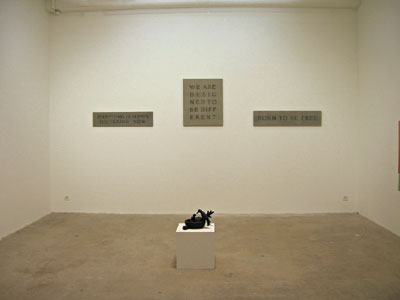




















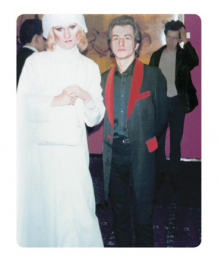




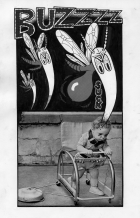
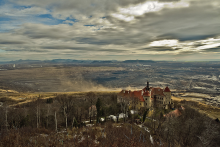
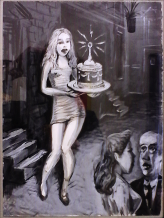
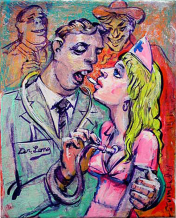


 New book by I.M.Jirous in English at our online bookshop.
New book by I.M.Jirous in English at our online bookshop.
Comentarios
Actualmente no hay comentariosAgregar nuevo comentario